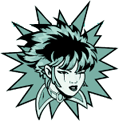Lesson 1.5. Using Common Views Figure 1-5. Three basic types of views. 
Just as there are several different types of database objects in Microsoft Project, there are also many different program screens or views, which makes Project quite different from most Microsoft programs. The default view for Project is the Gantt Chart view, which is the view you will probably use most often. However, there are many other views in Project. These views allow you to view and work with your project's data more easily. Most of them can be categorized into three basic types of views: chart or graph, sheet, and form (see the illustrations in Figure 1-5). Each view focuses on information about tasks or resources, depending on what you need to do. This lesson will show you how to switch views, and help you understand the best use for these views. Select View  Tip: Another way to open a view is to press Alt + V and press the underlined letter in the view name, or click the view button on the View Bar (select View Tip: Another way to open a view is to press Alt + V and press the underlined letter in the view name, or click the view button on the View Bar (select View  You are now in Task Usage view. This view shows each task and the resources assigned to it, and the cost of each task. Now try opening Resource Usage view. Select View  Resource Usage view shows each resource, the tasks they are assigned to, and the amount of scheduled work put into each task. You can also view the resources that are overallocated and determine how much time each resource has available for additional work assignments. Let's try viewing a graphic view. Resource Usage view shows each resource, the tasks they are assigned to, and the amount of scheduled work put into each task. You can also view the resources that are overallocated and determine how much time each resource has available for additional work assignments. Let's try viewing a graphic view. Select View  If you want to see tasks laid out in a month's time, use Calendar view. Calendar view is probably the easiest way to view task schedules, and it is easy to print and hand out to resources so they can see the project schedule without having to learn to use Project. If you want to see tasks laid out in a month's time, use Calendar view. Calendar view is probably the easiest way to view task schedules, and it is easy to print and hand out to resources so they can see the project schedule without having to learn to use Project. Now go back to the default view, Gantt Chart. Select View  But what do all the rest of the views do? To read a description of each common views, refer to Table 1-5. But what do all the rest of the views do? To read a description of each common views, refer to Table 1-5.
Table 1-5. Project 2003 Common Views[a]View | Type | Description |
|---|
 Calender Calender
| Graphic/Task | Displays tasks and durations in a monthly calendar. Use this task view to see tasks scheduled in a specific week or range of weeks. |  Gantt Chart Gantt Chart
| Chart/Task | Displays a list of tasks with bar chart information. Use this task view to enter and schedule tasks. |  Network Diagram Network Diagram
| Graphic/Task | Displays a sequence or logic diagram that shows tasks and dependencies. Use this view to create and adjust a schedule in a flow chart format. |  Task Usage Task Usage
| Sheet/Task | Displays a list of tasks showing assigned resources under each task. Use this view to see which resources are assigned to which tasks. |  Tracking Gantt Tracking Gantt
| Chart/Task | Displays a list of tasks in a table, with a baseline schedule and scheduled Gantt bars for each task. Use this view to compare the baseline and actual schedules. | 
Resource Graph | Graphic/Resource | Displays a graph showing your resources and their costs, allocations, etc. over time. Use this view to see information about your resources over a specific period of time. |  Resource sheet Resource sheet
| Sheet/Resource | Displays a list of resources and their details in rows and columns. Use this view to enter and edit general information for each resource. |  Resource Usage Resource Usage
| Sheet/Resource | Displays assigned tasks grouped under each resource. Use this view to show work or cost information for each resource. |
[a] Microsoft Project 2002 Help files, © 1999, Microsoft Corporation.
QUICK REFERENCE TO CHANGE VIEWS: TO DISPLAY THE VIEW BAR: SELECT VIEW  
|
|


